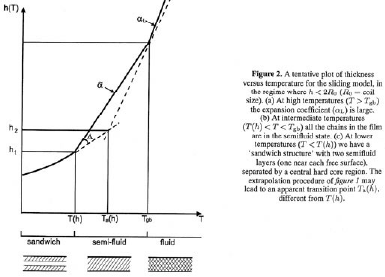Pierre-Gilles de Gennes: homage to a scientific style
11
juil.
2007
This post was first published in French on May 23. It is exceptionally translated here for submission to The Open Laboratory contest 2007.
The great scientist and Physics Nobel laureate Pierre-Gilles de Gennes passed away on May 18, 2007. After the formal obituary published by Le Monde and a few personal memories shared by fellow bloggers Tom Roud and Matthieu, I would like to focus on a less known aspect of his life and work: his scientific and writing style. Both have been extensively studied by Anouk Barberousse[1], a work which inspired a round table organized at the Ecole normale supérieure in Paris in 2003 with Etienne Guyon and de Gennes himself (between minute 16 and minute 30). Guyon emphasizes on the quality in expression, handwriting and choice of words of his former professor. He also highlights his peculiar use of blackboards, especially since de Gennes was very tall and those covered entire walls of his office. De Gennes would never use an overhead projector, even in his latest talks… This is partly due to the fact that he was very good at drawing (painting was his favorite hobby) and had a visual way of thinking that would let him analyze things while drawing them.
One of the hypothesis of this study is that in the field of polymer films, like in his whole career, de Gennes published mostly brief articles aiming at very fast peer-review and publication. This was in line with his habit of throwing new and straightforward propositions out, quickly edited (a publication format known as "Rapid Notes" or "Letters"), which he expected his peers would improve theoretically and test experimentally. Torn between the volubility of the one who introduces new concepts and conciseness, between implicitness and explicitness, de Gennes had to develop his own scientific style.
What is this style? De Gennes only cites works that are directly related to his theory, and has no consideration whatsoever for the experimental results that he doesn't find reliable. In the introduction already, he highlights the advantages of his model compared to the existing ones — and mentions its gaps in conclusion. In the course of the article, he uses all the ressources of language to be clear, in French like in English (his concepts of "reptation", "brush" or "mushroom" have been quite successful, others like "sandwich regime" are taking off). Some intermediate results are just skipped and de Gennes can thus grasp the essence of a phenomenon and isolate its important effects
, according to his colleagues. The figures, like the one below, are at the center of the article and the text; the meaning of some symbols can even only be understood at the cost of a complex cognitive treatment of the figure and its relation with the text
. If you add the multiple footnotes and references, everything is interwoven in the article! In the conclusion, he not only hints at the shared knowledge of his peers but also at implicit judgments on the theories at stake.
Which path did his writing follow? In one case studied by Anouk Barberousse, de Gennes was reacting to a poster presented during a conference in September 1999. It introduced a surprising result under the form of a discontinuity. De Gennes saw there a holy secret of nature
that he committed himself to solve. Before the end of the month, he had a first draft of his model circulate and asked the authors of the poster to react:
When you read the note, you may well conclude that it is nonsense: then drop it. If not, would you be interested in making the comparison? We could then publish together an augmented version.
What was the outcome? This work led to two articles[2] published in 2000 in The European Physical Journal E (DOI:10.1007/PL00013665) and the Comptes-rendus de l'Académie des sciences - Series IV (DOI:10.1016/S1296-2147(00)01131-8), respectively of 3 and 8 pages (that's not much!). Why not in more prestigious journals? Because those are often based in the USA and de Gennes wanted to contribute to the excellence of European journals in that field
, what a young researcher can less easily do! As of today and according to the Science Citation Index, both papers together were cited 138 times. Among the most cited articles that cite them, we see an experimental article that seems to support de Gennes' theory, a theoretical article as well as a review. Mission accomplished, we may say!
Notes
[1] Anouk Barberousse, "Dessiner, calculer, transmettre : écriture et création scientifique chez Pierre-Gilles de Gennes", Genesis, n° 20, 2003, pp. 145-162 (preprint).
[2] By the way, both have generic titles like "Glass transitions in thin polymer films" or "Glass transitions of freely suspended polymer films", i.e. of the kind James Hartley (Journal of Technical Writing & Communication, 2007, 37(1): 95-101) says is for experienced scientists only!

 ©
© 
Derniers commentaires